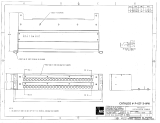
7
<type>slipcancel</type> ................................................................................................................... 73
<type>endorseprint</type>............................................................................................................... 74
<type>endorsecancel</type> .......................................................................................................... 74
<type>micrread</type>..................................................................................................................... 75
<type>micrcancel</type> ................................................................................................................. 76
<type>micreject</type> .................................................................................................................... 76
<type>micrcleaning</type> .............................................................................................................. 76
<type>onreceive</type> ................................................................................................................... 77
■ Printer Control XML .............................................................................................................79
<epos-print> ......................................................................................................................................... 79
<response> ........................................................................................................................................... 81
<text> .................................................................................................................................................... 84
<feed>................................................................................................................................................... 90
<image> ............................................................................................................................................... 92
<logo>................................................................................................................................................... 94
<barcode> ........................................................................................................................................... 95
<symbol> .............................................................................................................................................. 99
<hline>................................................................................................................................................. 104
<vline-begin> ..................................................................................................................................... 105
<vline-end>......................................................................................................................................... 106
<page> ............................................................................................................................................... 107
<area> ................................................................................................................................................ 108
<direction> ......................................................................................................................................... 109
<position> ........................................................................................................................................... 110
<line>................................................................................................................................................... 111
<rectangle>........................................................................................................................................ 112
<cut> ................................................................................................................................................... 113
<pulse>................................................................................................................................................ 114
<sound> .............................................................................................................................................. 115
<command> ...................................................................................................................................... 117
<layout> .............................................................................................................................................. 118
<recovery> ......................................................................................................................................... 121
<reset> ................................................................................................................................................ 121
■ Message Data for the Customer Display........................................................................122
<type>display</type>....................................................................................................................... 122
<type>onxmlresult</type> ............................................................................................................... 123
■ Customer Display Control XML........................................................................................124
<epos-display>................................................................................................................................... 124
<response> ......................................................................................................................................... 125
<window> ........................................................................................................................................... 126
<text> .................................................................................................................................................. 128
<cursor> .............................................................................................................................................. 129
<blink>................................................................................................................................................. 130
<brightness> ....................................................................................................................................... 131
<marquee>......................................................................................................................................... 132
<clock> ............................................................................................................................................... 133
<clear>................................................................................................................................................ 133
<reset> ................................................................................................................................................ 133
<command> ...................................................................................................................................... 133






















